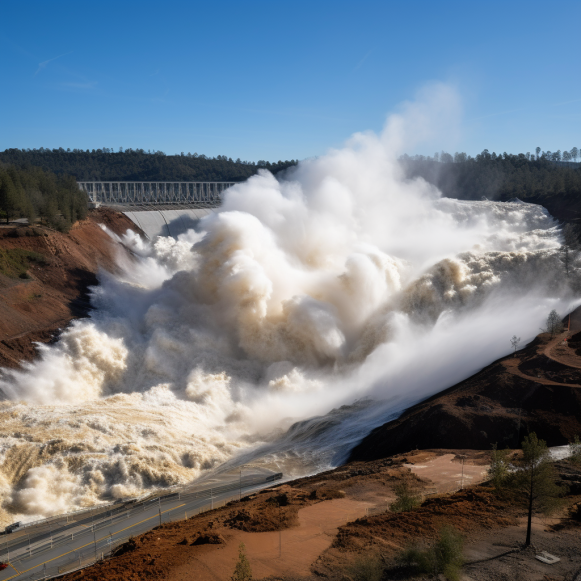‘Miracle’ water year in California: Rain, snow put state’s reservoirs at 128% of historical average

SACRAMENTO, Calif. — On Saturday, California’s “miracle” water year came to an end, with enough rain and snow to fill the state’s reservoirs to 128% of their historical average, making it one of the wettest years in state history.
This is a welcome relief for a state that has spent much of the last decade in a severe drought, forcing state leaders to consider how the state should share and manage its water in the future. The state’s most recent dry spell was broken in early 2023 by a series of winter storms.
Through the end of September, state officials recorded 33.56 inches (85.2 centimeters) of precipitation. California’s “water year” begins on October 1 each year to include all of the fall and winter months when the state receives the majority of its rain and snow. The state relies on the rainy season to fill reservoirs, which supply water for drinking, farming, and environmental purposes throughout the state.
Due to an extreme drought, these reservoirs have dropped to dangerously low levels in recent years. This resulted in water restrictions for homes and businesses, as well as reduced deliveries to farmers. It also posed a threat to already endangered fish species, such as salmon, which require cold water in rivers to survive.
However, as of Sept. 30, the State Water Project, which includes 30 reservoirs and storage facilities and serves 27 million people, reported 27.4 million acre feet in its reservoirs. One acre foot of water is enough to last a year for two families of four.
“This was as close to a miracle year as you can get,” Karla Nemeth, director of California’s Department of Water Resources, said.
A series of nine strong storms that hit California this winter aided the reservoirs. These storms dumped so much rain and snow that they were dubbed “atmospheric rivers.” They caused widespread flooding across the state and were blamed for a number of deaths.
The storms also dumped a significant amount of snow on the mountains. On April 1, the state snowpack was 237% higher than the historical average. According to Michael Anderson, the state’s climatologist, this is only the fourth time since 1950 that the state’s snowpack has exceeded 200% of average.
In the spring and summer, all of that snow melted, filling rushing rivers and reservoirs. Lake Oroville’s water level rose 240 feet (73 meters) between December 1, 2022, and the end of the snowmelt period. According to Ted Craddock, deputy director of the State Water Project, this is the largest increase in storage in a single season since the reservoir opened in 1968.
State and federal officials will have to drain some reservoirs to make room for the additional water that is expected this year. El Nino — the natural, temporary, and erratic warming of a portion of the Pacific Ocean — could complicate the state’s rainy season. El Nino has an impact on weather patterns all over the world. During an El Nino year, California typically receives more rain and snow. According to the National Oceanic and Atmospheric Administration, this year’s El Nino has a 56% chance of being considered strong and a 25% chance of reaching supersized levels.
The possibility of more powerful storms this year, particularly along the coast, “keeps me awake a little bit at night,” according to Gary Lippner, deputy director for flood management and dam safety with the California Department of Water Resources.
“We just do not have extensive flood systems on the coast of California,” he stated. “That’s an area we’re paying particularly attention to.”
All of this year’s rain and snow could have contributed to a smaller wildfire season so far. Because of the extreme dryness, wildfires grew in size during the drought. California has burned over 476 square miles (1,234 square kilometers) so far this year. According to the California Department of Forestry and Fire Protection, this is far below the five-year average of 2,031 square miles (5,260 square kilometers).




